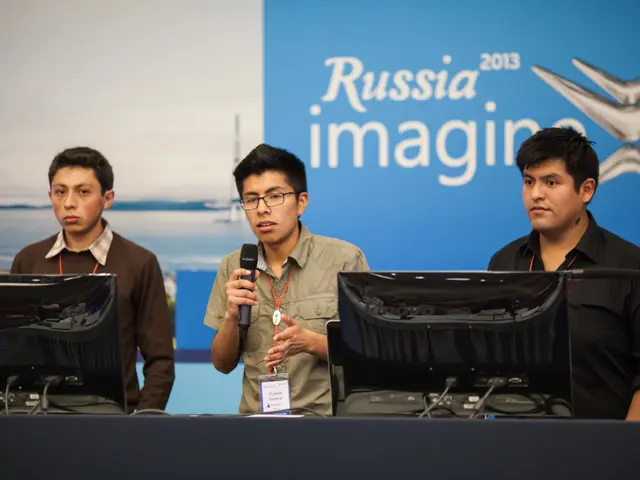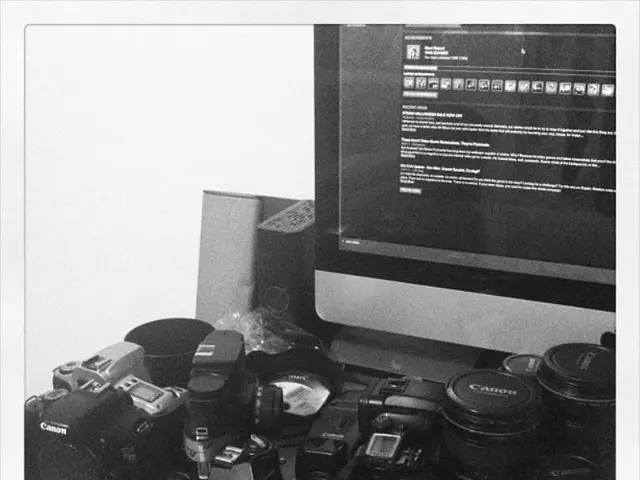Lunar undertaking: NASA proposes constructing a massive radio dish on the moon's enigmatic far side, revealing the reasons behind this project.
NASA scientists are working on a plan to construct a monumental radio telescope within a mile-wide crater on the moon's far side. Known as the Lunar Crater Radio Telescope (LCRT), the project aims to unravel some of the universe's biggest mysteries and address growing concerns about disruptions to Earth-based radio astronomy due to private satellite constellations.
The LCRT, if approved, could cost over $2 billion and might be built during the 2030s. The telescope would consist of a giant wire mesh suspended inside a crater, similar to the Arecibo Observatory in Puerto Rico and China’s Five-hundred-meter Aperture Spherical Telescope (FAST). This design would provide shielding from satellite signals, solar radiation, and Earth's atmosphere.
The LCRT project was first proposed in 2020 and has received funding from NASA's Institute for Advanced Concepts (NIAC) over the past two years. The team behind the project is preparing to apply for additional funding to advance the project to its final stages. If the funding is granted, the LCRT could become a full-fledged mission in the coming years.
Researchers are investigating the LCRT at NASA’s Jet Propulsion Laboratory (JPL), at the California Institute of Technology. A 200:1 scale prototype will be tested later this year at the Owens Valley Radio Observatory in California.
On the moon, the LCRT would feature a 350-meter-wide mesh reflector, larger than the collapsed Arecibo dish but smaller than FAST. The first proposal called for a 1,000-meter reflector, making the LCRT three times smaller than initially intended. Scientists have already identified a suitable crater for the project in the moon's Northern Hemisphere, although they've chosen to keep the exact location confidential.
The idea of a lunar radio telescope dates back to at least 1984. With advancements in technology, such as autonomous space robotics, the LCRT could put that concept into practice. However, the current projected cost of $2.6 billion may pose a challenge, especially with NASA's budget being severely cut by the Trump administration.
Growing numbers of satellites orbiting Earth pose threats to radio astronomy, through the emergence of space junk, light pollution, and radio interference caused by satellite radiation. If the number of satellites around our planet reaches its maximum capacity, Earth-based radio astronomy could face severe limitations, if not become impossible in some wavelengths. A shielded telescope on the moon could help maintain radio astronomy even in such a worst-case scenario.
However, even a single lunar telescope would only allow for a fraction of the science currently being conducted by ground-based radio observatories, limiting our understanding of the cosmos. Some researchers are also exploring the idea of using a constellation of satellites orbiting the moon as an accompaniment or alternative to the LCRT. These would likely have a more limited window for observations.
In addition to preserving Earth-based radio astronomy, the LCRT could help study radio signals with wavelengths greater than 10 meters (ultra-long wavelengths), which are difficult to detect from Earth due to atmospheric absorption. The LCRT would also be shielded from solar radiation, making certain radio signals more accessible for study on the moon.
Previously, the Odysseus lander, the first private spacecraft to land on the moon and the first American lunar lander in over 50 years, carried NASA's ROLSES-1 instrument to the moon's near side in 2024. Despite the lander tilting on its side upon landing, the telescope collected some lunar radio data, although most signals came from Earth. In 2025, Firefly Aerospace's Blue Ghost II lander plans to attempt landing on the moon's far side, carrying a mini radio telescope to study ultra-long wavelength signals.
As the LCRT continues through the funding process, its impact on radio astronomy and our understanding of the universe could be significant. A fully-fledged mission might become a reality in the 2030s if the project receives complete funding and passes its final phases successfully.
The LCRT, if fully-funded and successfully completed, could potentially bolster environmental-science by studying radio signals with wavelengths greater than 10 meters (ultra-long wavelengths), which are difficult to detect from Earth due to atmospheric absorption. Additionally, the project's advancements in technology, such as shielding from satellite signals, solar radiation, and Earth's atmosphere, could pave the way for innovations in space-and-astronomy and technological endeavors beyond the LCRT.




